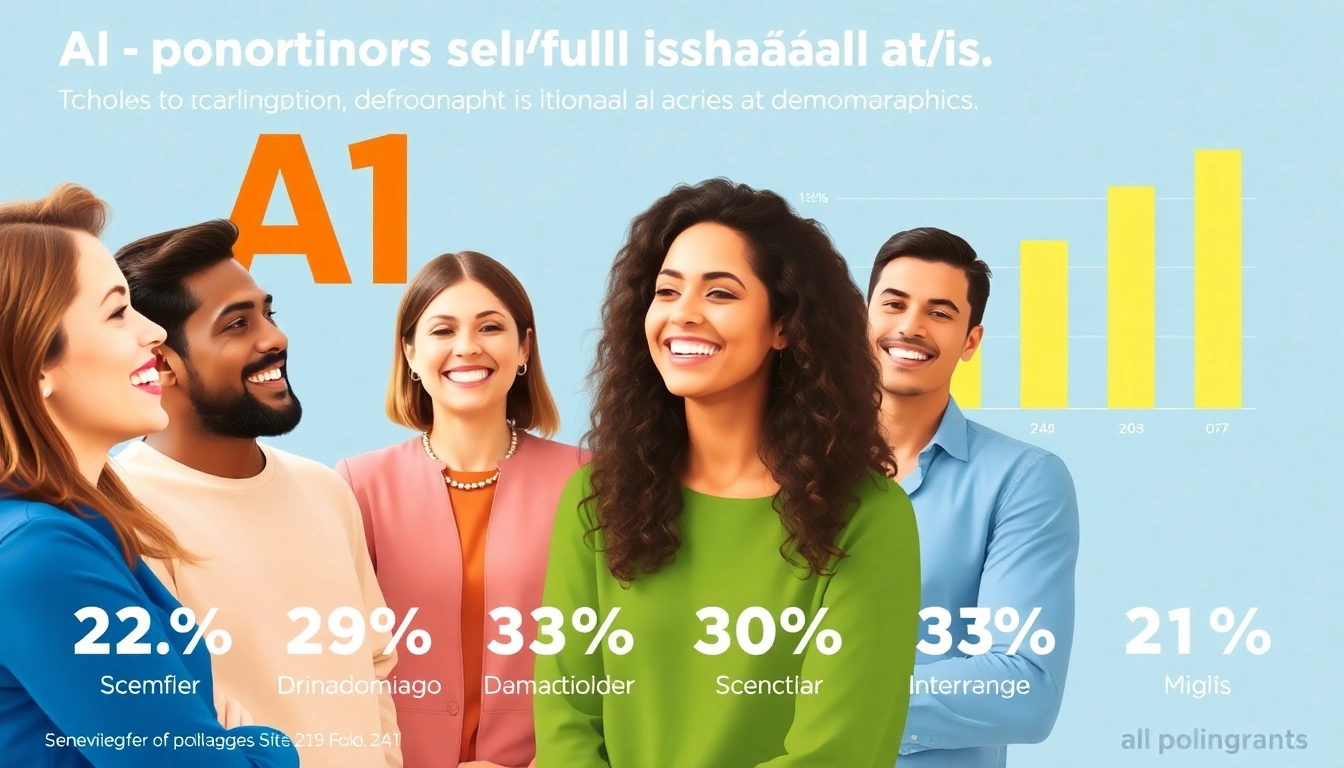Introduction to AI Opinion Polls
In an increasingly digital world, public perception of artificial intelligence (AI) has become a pivotal concern across different sectors, from healthcare to finance. Understanding how people feel about AI technologies can help guide decisions made by policymakers, businesses, and technologists. In this regard, AI opinion polls serve as a crucial tool for gauging public sentiment and elucidating the complex attitudes toward AI systems.
Defining AI Opinion Polls
AI opinion polls are surveys designed to collect data on individuals’ perspectives regarding artificial intelligence technologies and their implications. These polls typically include questions about perceptions of AI’s benefits, risks, and applications, often segmented by demographic factors such as age, gender, and education level. The insights garnered from these polls provide a quantitative measure of public sentiment which can be tracked over time to identify trends and shifts in opinion.
Importance of Public Sentiment in AI
Understanding public sentiment towards AI is essential for several reasons. First, it helps technologists develop AI systems that are more aligned with societal values and concerns. Second, businesses can tailor their AI implementation strategies based on customer sentiments, enhancing user acceptance and minimizing resistance. Finally, policymakers can make more informed decisions to regulate AI technologies, ensuring that public safety and ethical considerations are prioritized.
Overview of Recent Trends
Recent polls indicate that public opinion on AI is often polarized. A recent report showed that 52% of Americans express concern over AI’s integration into daily life compared to just 10% who are more excited. As AI technologies continue to penetrate various sectors, tracking these trends allows us to understand the evolving landscape of public opinion regarding AI.
Current Landscape of AI Opinions
Key Statistics from Recent Polls
Recent surveys reveal various aspects of public opinion on AI. According to a Pew Research study, around 52% of adults in the United States show more concern than excitement about AI technology. Furthermore, many studies reveal stark contrasts among different demographics, with variations based on gender, age, and educational backgrounds.
Demographic Variations in AI Sentiment
The perception of AI is not uniform, with significant differences observable across various demographics. For instance, women typically express greater skepticism about AI technologies compared to men. Polls indicate that younger adults tend to be more optimistic about AI’s potential than older generations, suggesting that as AI becomes more integrated into everyday life, generational attitudes toward it are likely to evolve.
Comparative Analysis with Previous Years
Analyzing past opinion polls indicates a shifting perception over time. Historical comparisons highlight that concerns around job displacement due to AI have grown alarmingly over the past few years. In previous years, there was more enthusiasm surrounding anticipated innovations from AI; however, current polls show rising anxiety related to ethical implications and trustworthiness issues in AI systems. These shifts call for deeper analysis to uncover underlying factors shaping public sentiment.
Common Concerns and Misconceptions
Perceived Threats of AI Implementation
There’s a widespread belief that AI could displace a significant number of jobs, leading to economic instability. Studies show that about 41% of Americans perceive AI as doing more harm than good, particularly in protecting personal information. Such widespread concern underlines the necessity for actionable measures to address public fears and promote understanding of AI’s benefits.
Societal Impacts of AI Technology
The societal impact of AI is another significant topic of debate. Many polls reveal that a substantial number of people fear AI’s role in the spread of misinformation, with 72% of respondents from a recent Axios poll expressing negative opinions about its implications. The ability of AI to generate deepfakes, for instance, has further fueled public anxiety regarding the potential for manipulation and deceit.
Addressing Misinformation and Fears
Efforts to combat misinformation and address public fears around AI should include educating the public about AI technologies, their applications, and benefits. Increased transparency from tech companies in how AI systems function can foster trust and optimize public sentiment. Producing informative content that demystifies AI will be critical in shaping a more accurate perception of its real-world applications and implications.
Case Studies on AI Poll Data Usage
How Organizations Leverage Polling Data
Organizations utilize AI polling data to gauge consumer response and adapt their strategies accordingly. For instance, tech companies can analyze public sentiment to refine their product offerings. Companies like Microsoft and Google have embedded user feedback via opinion polls during AI product development, ensuring alignment with user expectations and concerns. This practice not only supports product improvement but also promotes user engagement and acceptance.
Success Stories in AI Implementation
Several organizations have successfully implemented AI solutions by staying attuned to public sentiments derived from polling data. For example, the healthcare sector has seen organizations utilize AI for diagnostic purposes while addressing public concerns about data privacy. Implementing all-encompassing strategies to reassure users has often led to higher acceptance rates and wider adoption of AI, showing how leveraging public sentiment can lead to successes in AI innovation.
Lessons Learned from AI Adoption
Data-driven insights from AI opinion polls have illuminated vital lessons for industry players. One key takeaway is the importance of addressing public skepticism proactively. Organizations have learned that fostering an open dialogue regarding AI’s capabilities, limitations, and ethical practices is crucial in building trust and alleviating fears. Additionally, listening to user feedback and continuously refining AI systems based on public input can result in technologies that better serve societal needs.
Future of AI Opinion Polling
Emerging Trends in Public Opinion
Future trends suggest that public opinion will become increasingly sophisticated as individuals become more educated about AI technologies, leading to nuanced views that may bridge the current divide. As more stakeholder engagement occurs in the AI development process, there’s a likelihood of improved public sentiment as perceptions shift towards curiosity and acceptance.Needless to say, continuous monitoring through opinion polls will be essential to keep pace with generational shifts in attitudes.
Predictions for AI Acceptance Rates
According to several research forecasts, we expect a gradual increase in acceptance rates for AI technologies over the coming years, yet significant hurdles remain. Surveys suggest that as awareness and understanding of AI grow, so too will the comfort levels. However, aligning with public apprehension, resistance rooted in misconceptions will likely persist, necessitating continuous education and dialogue.
The Role of Polls in Shaping AI Policies
Polling data will continue to play a vital role in shaping AI policies and regulations. Policymakers can leverage public sentiment to create balanced regulations that protect citizens while promoting innovation. Moreover, periodic polling can track the effectiveness of various policies, ensuring they align with public expectancies. Engaging the public in discussions around AI governance will foster a more democratic approach, paving the way for responsible AI development.



